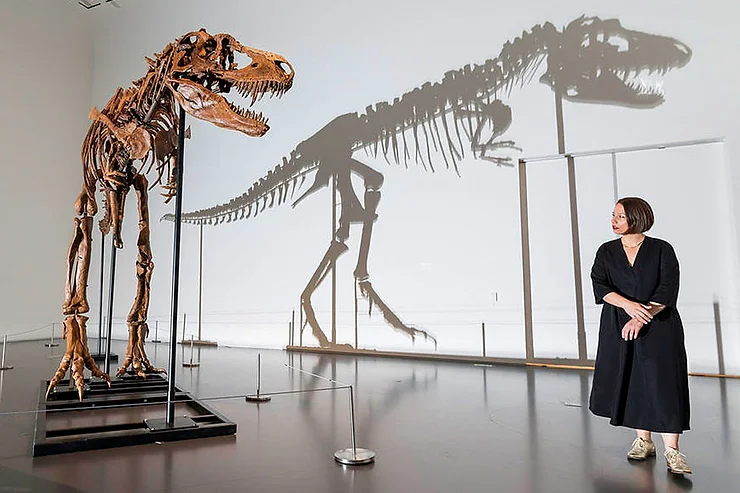By: Lucas Chi
A skeleton of the prehistoric Gorgosaurus dinosaur will soon be auctioned for an estimated 6-8 million dollars. The skeleton was discovered by Sotheby’s, an auctioning company that collects different works of art and collectibles.
The skeleton measures 3 meters tall and 6.7 meters long; slightly smaller than a Tyrannosaurus-Rex. Although smaller, the Gorgosaurus is fiercer, has a faster speed, and has a more powerful bite. A Gorgosaurus bite has a strength of 42,000 newtons, compared to a human bite strength of 1100 newtons.
Sotheby also said that the skeleton is “one of the most valuable dinosaurs to ever appear on the market”.
A T-Rex fossil auctioned in 2020 made 31.8 million dollars. It was also estimated to be around 6-8 million dollars but made a lot more money. A similar outcome could happen for the Gorgosaurus dinosaur because it is one of the only full skeletons ever auctioned in public.
In total, 20 Gorgosaurus models –which are made up of different fossils, have been discovered. The first skeleton was found in 1920 by Levi Sternberg. The fossils were discovered in Havre, Montana, and the dinosaurs they belonged to are believed to have lived across western North America.
This sale was the last auction of an entire skeleton since 1997 when it sold a T-Rex for 8.36 million.
Sotheby’s head of science and popular culture, Cassandra Hatton said, “All of the other specimens of Gorgosaurus that have been found are in museums. This is the only one that you can actually buy, so it’s an exciting moment, both for private collectors and institutions.”
Because the U.S. allows the sale and export of fossils, the skeleton could just about end up anywhere.
As human technology advances and grows, dinosaur fossils will become easier and easier to find. In the upcoming years, we can also expect dinosaur fossils to become more readily available at lower prices.
Sources: dinopedia.fandom.com kidsnews.com.au nationalgeographic.com











